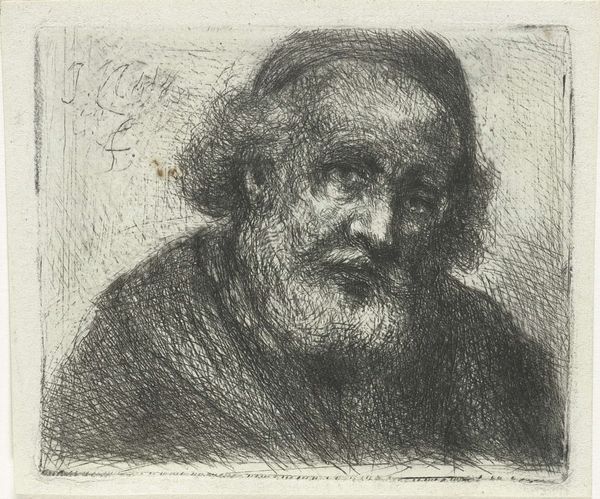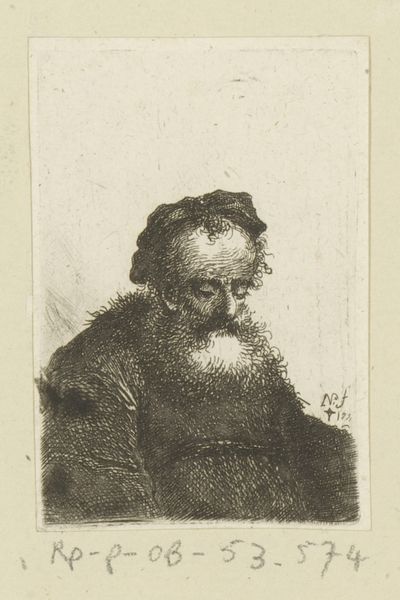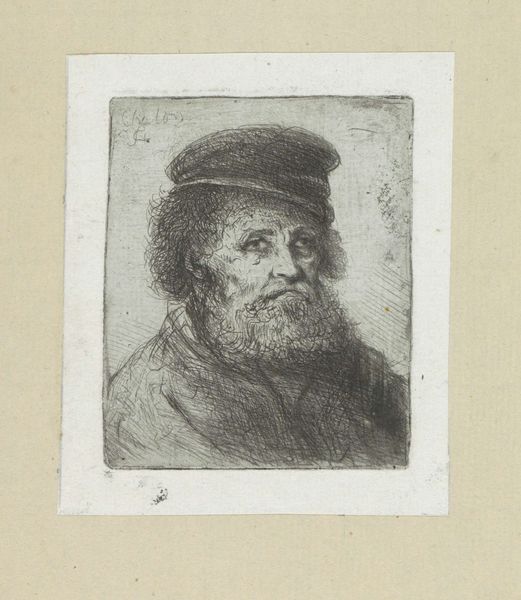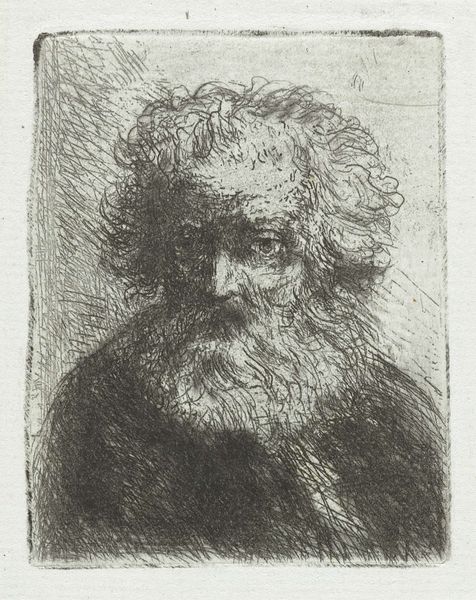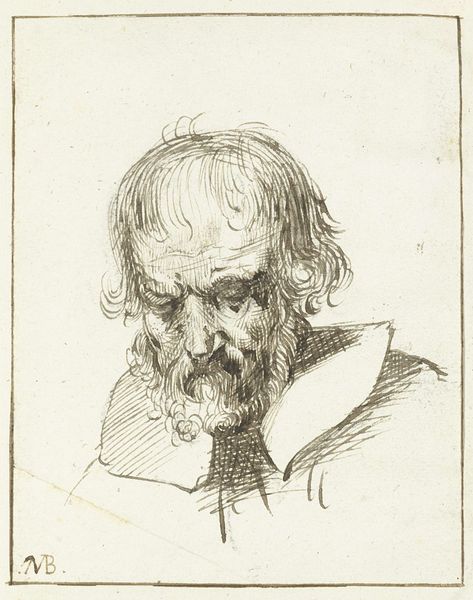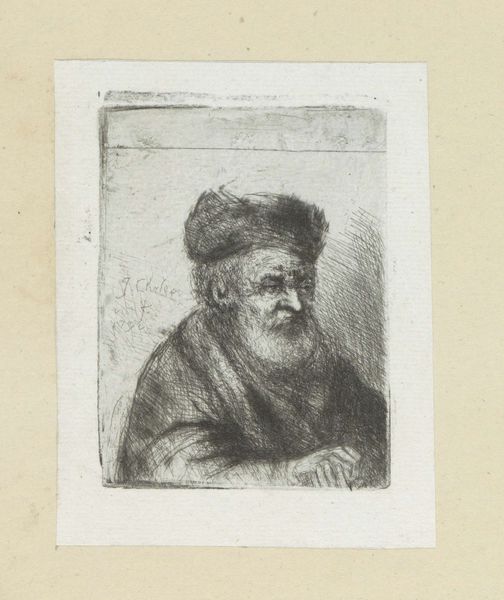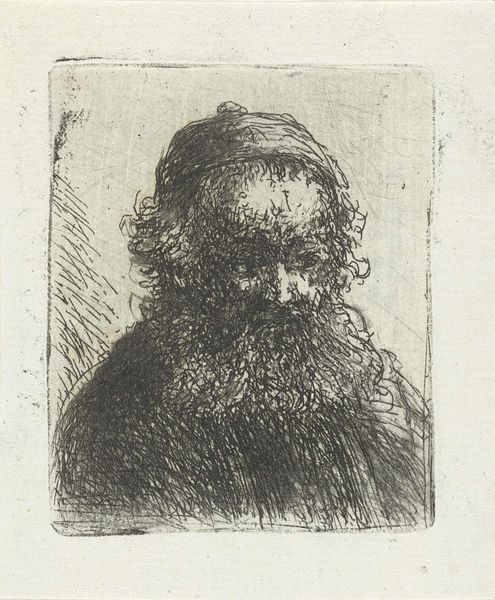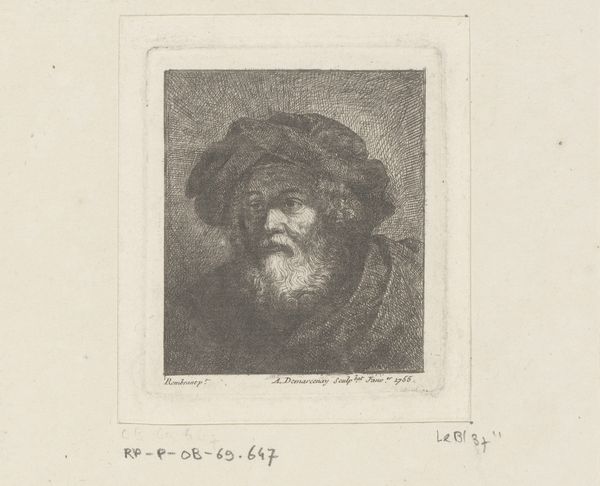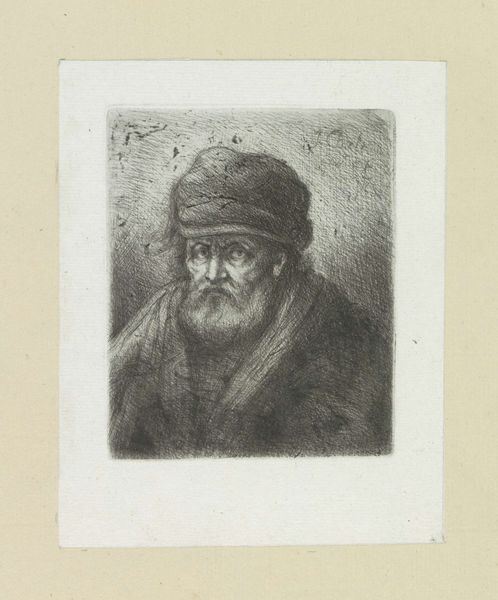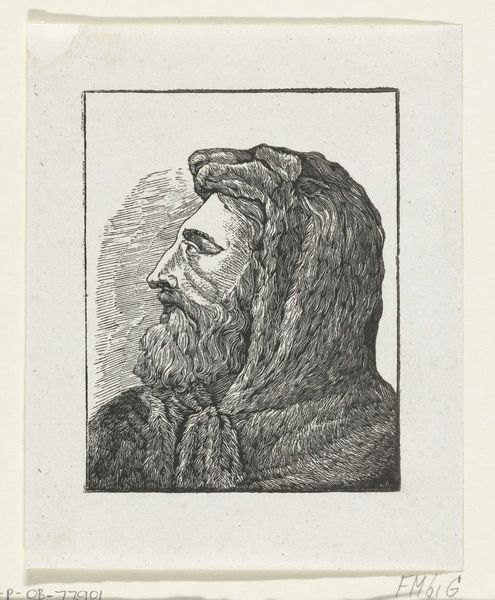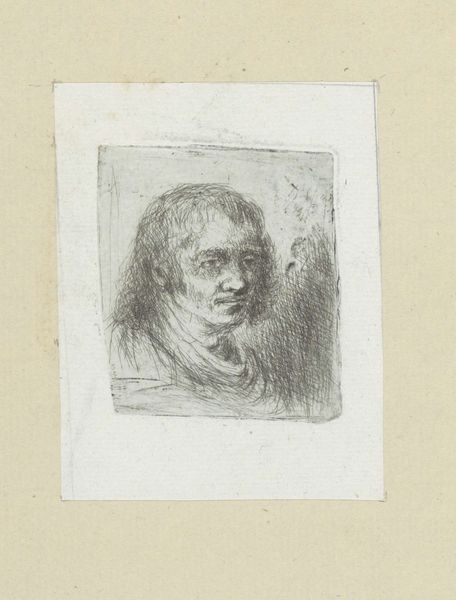
drawing, print, etching
#
portrait
#
drawing
#
neoclacissism
# print
#
etching
#
figuration
#
form
#
portrait reference
#
line
Dimensions: height 149 mm, width 95 mm
Copyright: Rijks Museum: Open Domain
Jan Chalon made this etching of a bearded man around 1791. Etching is an indirect process: the artist doesn't work directly on the plate, but instead uses acid to bite the image into its surface. Think of it: the plate itself is metal, likely copper, and the ink that sits on the surface of the paper is carbon, the residue of burnt material. The artist used a sharp needle to draw through a wax coating, then the plate was submerged in acid. Where the metal was exposed, it was eaten away, creating recessed lines that hold the ink. Finally, the plate and paper are pressed together, transferring the image. The magic of etching resides in these drawn lines, which describe every detail, and convey a sense of depth and volume. The fine cross-hatching is particularly remarkable. While etching has long been considered a fine art technique, the amount of labor and the inherent qualities of the materials used, are also rooted in craft traditions.
Comments
No comments
Be the first to comment and join the conversation on the ultimate creative platform.

